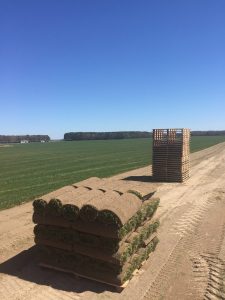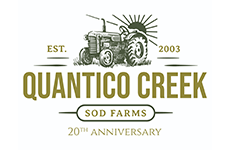
Cool-season grass and warm-season grasses both count as types of drought tolerant sod. Let’s find out more!
Even though summer is known for having hurricanes and other instances of extreme weather, sometimes you’ll also have to put up with drought. Droughts happen most often during the summer because of how hot and dry it is. Cool-season grass and warm-season grasses both count as types of drought tolerant sod. Let’s find out more!
Cool-Season Drought Tolerant Sod
When you are looking for cool-season drought tolerant sod, keep in mind that not all of the sod types are the same. Some will need to be watered, while others can survive just by getting rained on. Others will form into natural-looking clumps while others won’t be a good surface to play on. So with all that said, what cool-season sods should you be on the lookout for?
- Tall fescue: This bunch-type grass is highly adaptable. It usually presents a very coarse texture. You’ll need to seed it heavily, but it turns into a conventional lawn that is also great for foot traffic.
- Sheep fescue: This oddly-named sod is a bunchgrass that also grows in clumps. It looks natural and survives well without much water. It doesn’t need mowing or fertilizing that often, but because of how bumpy it is, it isn’t very much fun to play on.
- Buffalograss: Buffalograss originated in the Midwest and has quickly gained popularity elsewhere around the country. That’s because it presents thick and lush turf that is incredibly hardy. You’ve got to either mow it high (around 5 inches) or leave it untouched.
- Wheatgrass: Wheatgrass is incredibly versatile. Although they look coarse, they make for excellent all-purpose grasses. They don’t need much water or fertilizer and are tremendous fits for low-maintenance lawns.
Warm-Season Drought Tolerant Sod
Summertime is when warm-season sod thrives. Most of the time, these varieties are already considered to be drought tolerant. To make the most of your selection, though, be sure to find out if the cultivar resists drought and is a good fit for your neighborhood.
- Bermudagrass: This grass is resilient against drought and foot traffic. It loves the sun and perks back up with only a little bit of water. However, you need to mow it more often than its cousins. It goes dormant in the winter when it is typically overseeded with rye to keep it looking green.
- St. Augustine grass: This grass prefers the shade. It also handles moderate traffic quite well. It does stay green during the winter.
- Zoysia grass: Zoysia likes both sun and shade. However, compared to its fellows Bermuda and St. Augustine, it grows relatively slowly. Cultivars to look for include El Toro, Empire, Jamur, and Palisades.
- Centipede grass: Centipede looks apple green or lime green. Though it is slow-growing, it makes for a beautiful lawn and landscape once it is established. It also wants to be in full sun or partial shade but can tolerate acidic soil.
- Bahiagrass: Bahiagrass grows strong roots, which allows it to survive drought-like conditions. However, the roots will start to thin out eventually, and it’s not good for areas with plenty of shade.
Have More Questions? Stay in Touch!
Order early, and order often to ensure the best service possible. Contact us through our online page. Find us at 27616 Little Lane, Salisbury, Maryland 21801. Our phone number is 410-726-6103, and our fax number is 410-742-6550. Speak to Jason Anderson for Turf Grass Sales. Reach him by email at jason@quanticocreeksod.com. Finally, follow us on social media on Facebook, LinkedIn, and our blog!
